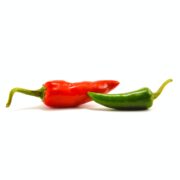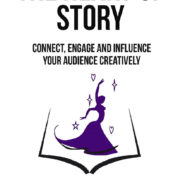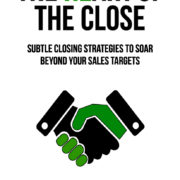Do a Good, Clean Job the First Time Around
Growing up in India in the 70s, I used to run many errands for mom. One of them was to run to a neighborhood vegetable vendor for our daily needs of chilies, mint, garlic, etc. Those were the days of no refrigerator at home and we bought fresh, ate fresh, and were, of course, total vegetarians.
This specific vegetable vendor used to display his wares from a concrete platform the size of a double bed, with no walls but with just a thatched roof for cover. There were times that I used to reach him way before he would be ready to sell from his shop with no walls. He would make me wait.
Wait I did, while he would very ceremoniously sweep, clean, wash and mop his whole shop. Wait I did, while he swept and watered the whole area surrounding his platform. He would then open his new stock delivered in freshly washed gunnysacks. Slowly, item by item, he would dunk them in water and set them up in tiny heaps for a single purchase. All the time washing, cleaning, and rinsing everything around him and his hands every so often. Wait I did, while he tied back the knots on the gunny sacks of stock and then light up some incense sticks and bless his abode and business. He would then stick the incense sticks into a potato and place it in a strategic location of his empire. Tucking his loose, white trouser bottoms under his legs, he would then, proudly, plop himself down in a lotus posture in front of his fine and fresh display. He’d put his hands together and announce that he was now open. He’d say, Namaskaram!
All this while, parts of me would wonder why doesn’t he just hand me the darn things I needed before the whole rigmarole. At the same time, parts of me would be spellbound by his rituals, his ceremonies, his discipline, and his dance of being clean, tidy and organized. Mom would insist that I buy all our needs from him rather than all the other vendors in his neck of woods. I did not understand her insistence then but years later, I did. He was not the biggest vendor, he was not the cheapest vendor on that street but his goods were always fresh, just rightly priced but his self-discipline was endearing and because of that, he, his goods and service could be trusted.
That was a long time ago. Now that people have moved on to buying fresh, buying from smaller vendors, buying closer to the source that is clean, tidy, and trusted I am wondering how popular and successful this vendor from my childhood would have been? He would not have needed all the noise, the buzz, and the big neon lights that many need. He would not have social media buzz to plug their products and services as we all do. He would have been a natural draw. His following would have been huge and totally organic.
My friend from Singapore, Philip Merry says, “Your number one (often overlooked) marketing tool-Do a good job the first time around.” That was true back in the good old days; it is true now and will be true forever into the future. When we do a good, clean, tidy, organized, value-creating job the first time around, the world does light up our brand, in neon lights, across the stratosphere.
I remembered this story and the lesson it brings forth when Patricia Aliphon spoke about how she keeps her presence on social media tidy and clean. “KonMari,” she called it. To me it sounded like Namaskaram!
It strikes me that no matter what we do and what we put out into the world, it must be clean, it must be tidy in presentation, and it must do a good job the first time and every time.
Many businesses took a beating last year. Matter of fact, all of us did. Most all of us are scrambling back onto a world that acquiesced new rules of play and the words tidy, clean, and good have become crucial parts of all conversations and conversions. We are doing the same with our offering to our market. We are not just concerned with being cheaper, better, and faster but we are disciplining ourselves towards being tidy, clean, fresh, and creating real value in real-time. And, I am betting almost all of you are on a similar journey. The little improvements we make towards our service and offering do, authentically, enhance our presence and influence on our worlds. From that tiny vegetable vendor in India to all of you across the world, Namaskaram!
P.S.
On February 18, we are running a free webinar on Authentic Influence™ for Entrepreneurs. We will be happy to have you all over to talk about how we are all bouncing back and bouncing back higher.
Here is the link: https://www.innersuninc.com/product/authentic-influence-for-entrepreneurs/
Or, you might want to download a FREE book on Five InSights into Success, here you go:

